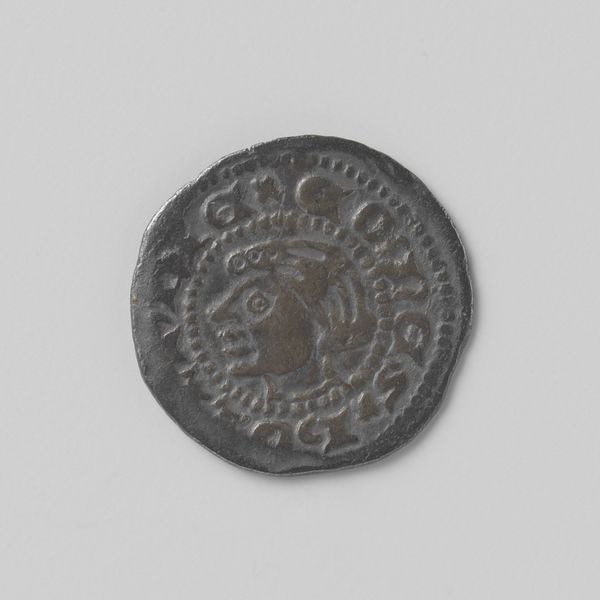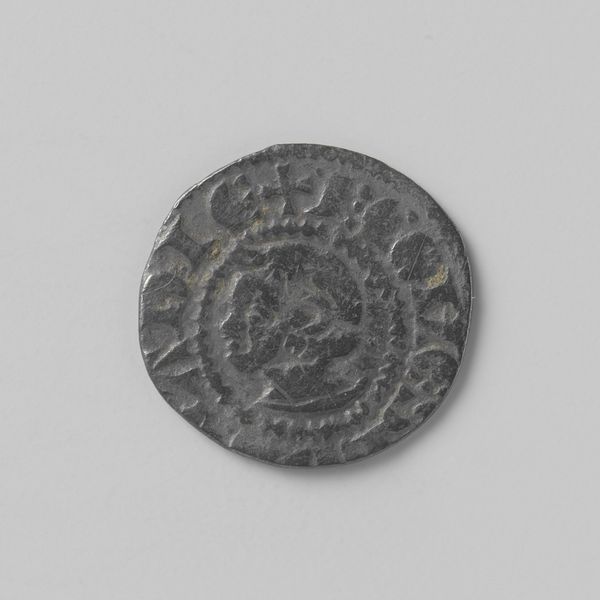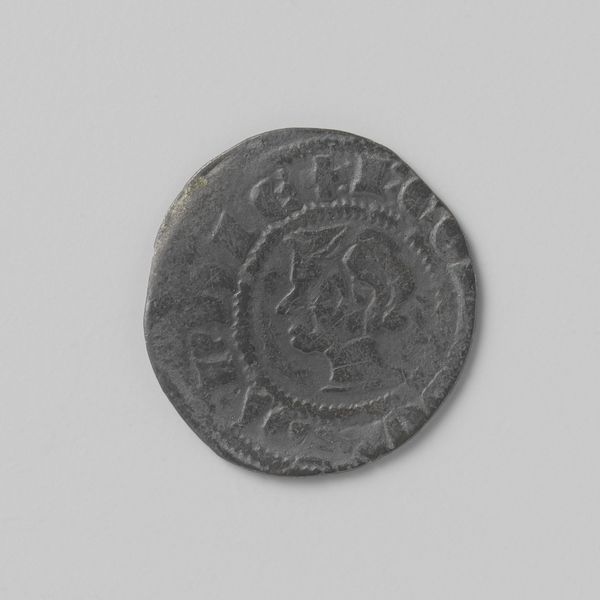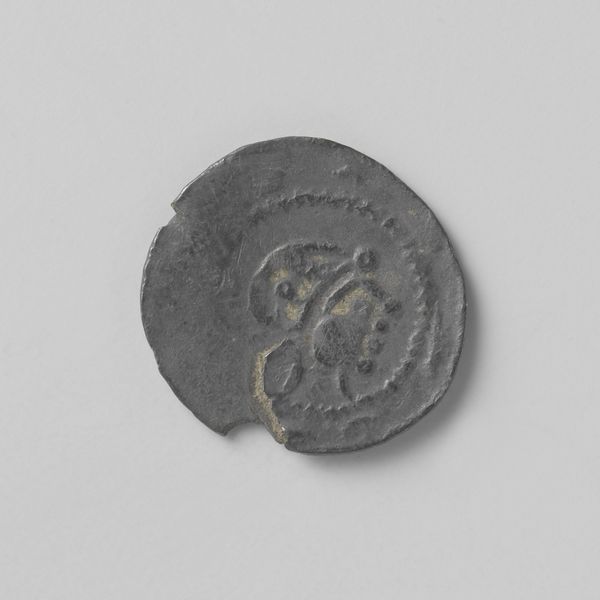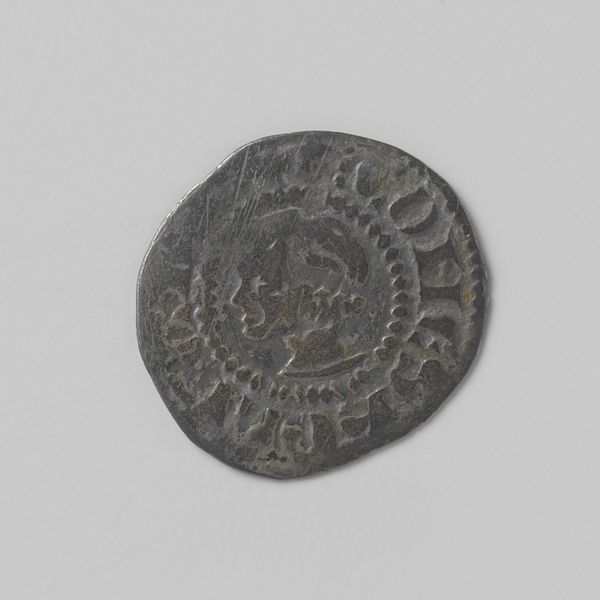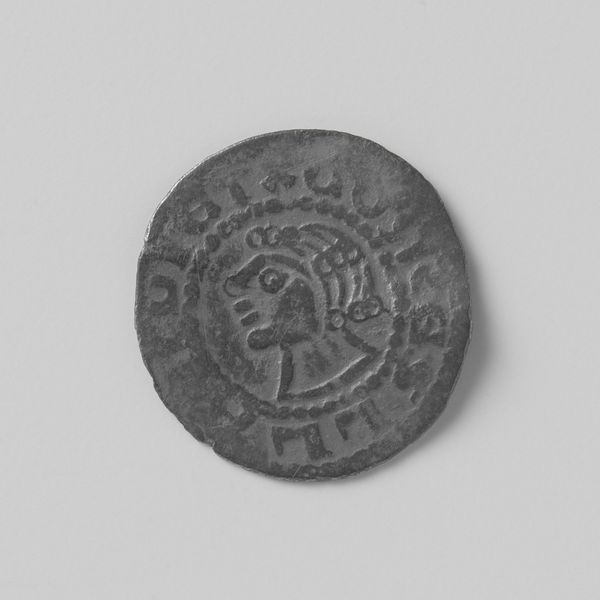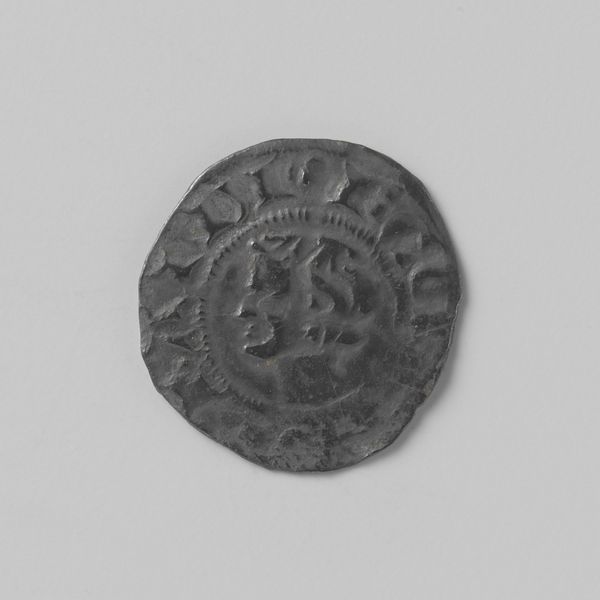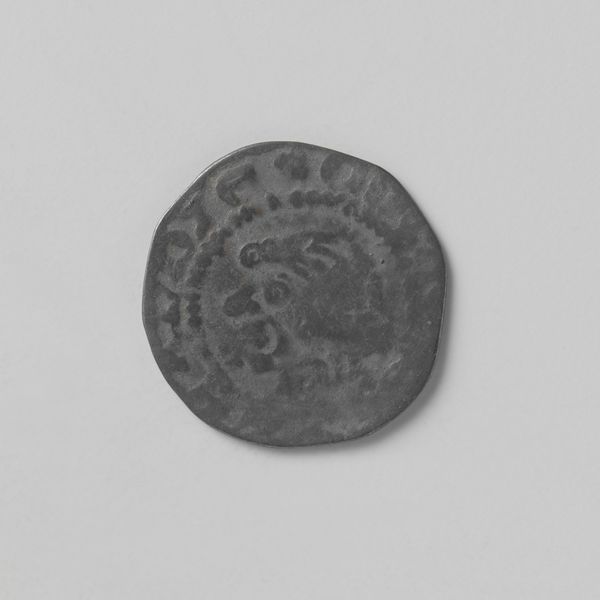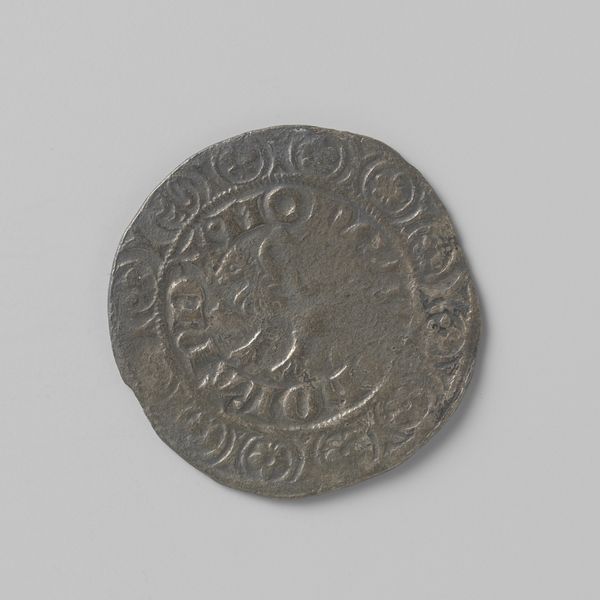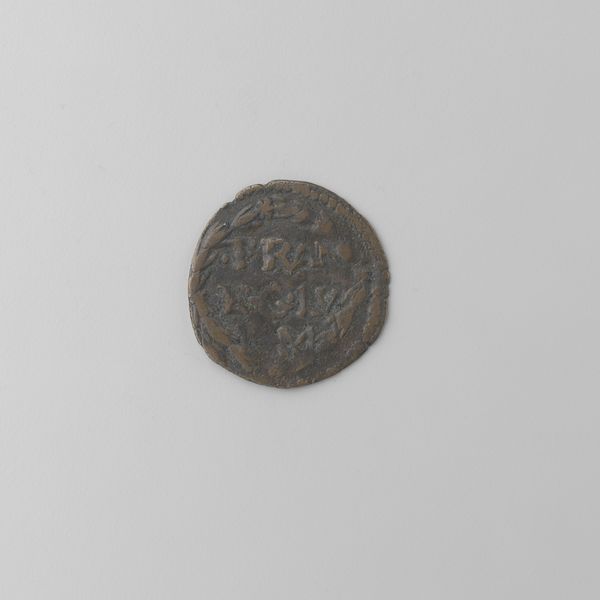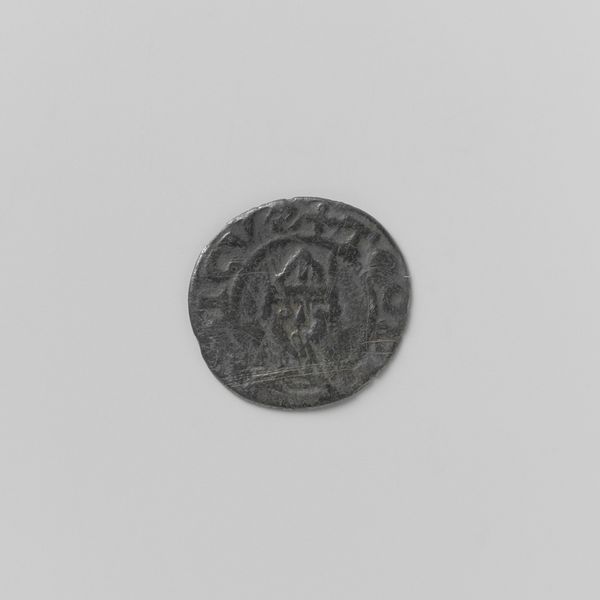
Hollandse penning van Floris V, 1256-1296 1284 - 1286
0:00
0:00
metal, relief, sculpture
#
portrait
#
medieval
#
metal
#
relief
#
sculpture
#
embossed
Dimensions: diameter 1.3 cm, weight 0.45 gr
Copyright: Rijks Museum: Open Domain
This is a Dutch penny of Floris V, made of silver sometime between 1256 and 1296. It is a remarkable thing to consider a ruler like Floris V as the ‘artist’ of this coin. Of course, he wouldn’t have been directly involved in its manufacture. Minting coins was a complex process involving mining, refining, die-making, and striking, all carefully controlled by the state. The coin’s worn surface speaks to its function as a facilitator of economic exchange. Consider the labor involved in producing the silver, and the further labor it could purchase. The image of Floris V stamped onto its surface declared ownership, linking material production to the consolidation of political power. Even the coin’s small size – just over an inch in diameter – is significant. It allowed for widespread circulation, embedding the ruler’s image in everyday transactions, thereby shaping collective identity through mundane economic rituals. So while this may seem like a humble object, it exemplifies how materials, making, and context intertwine to shape our understanding of history.
Comments
No comments
Be the first to comment and join the conversation on the ultimate creative platform.
